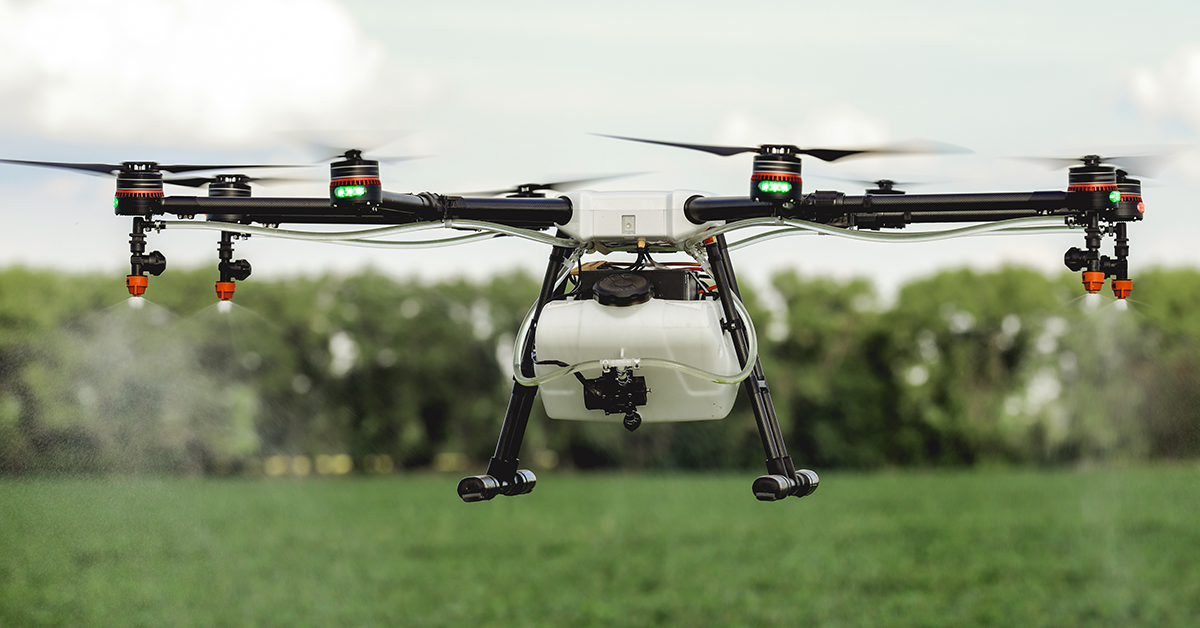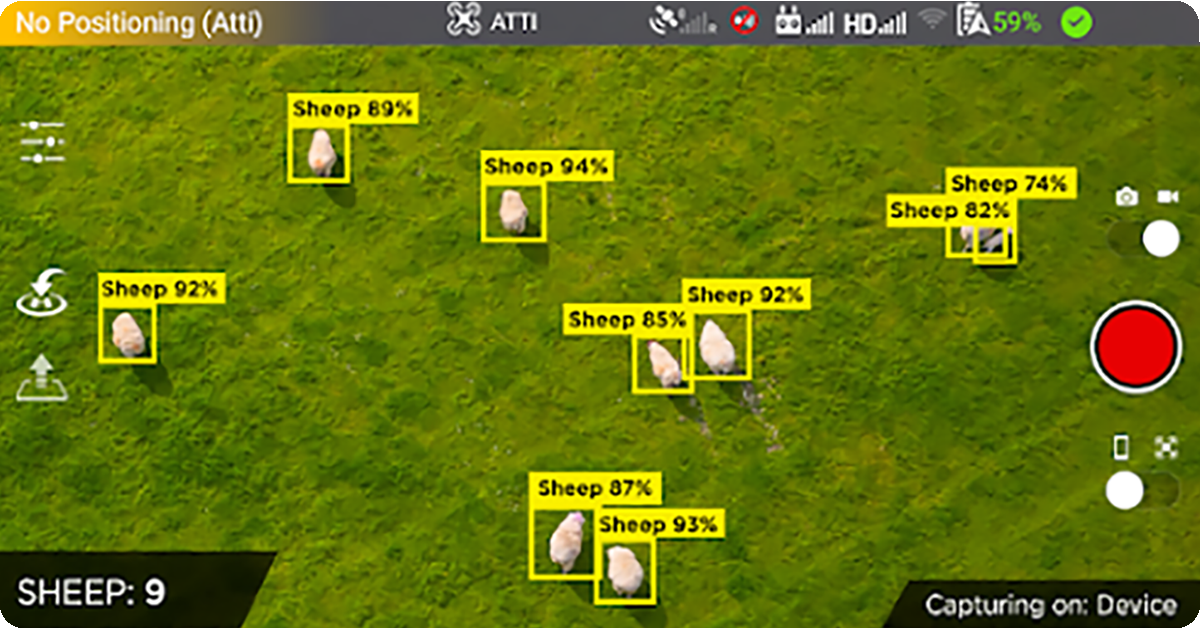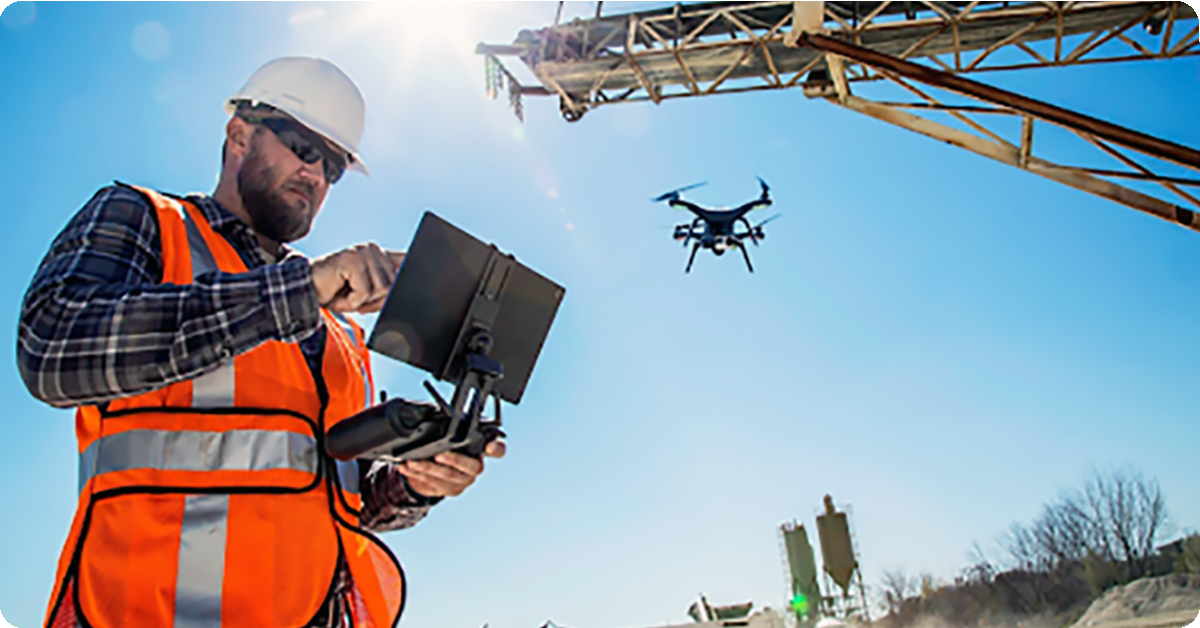
You’ve probably heard the buzz in the air as new technology rapidly enters agriculture. Uncrewed Aerial Vehicles (UAVs) or drones are quickly changing how we farm in the United States. Over 30% of South Korea’s total agriculture and 40% of Japan’s rice crops are sprayed using farm drones. Drones combine sophisticated sensing, imaging, and software to deliver higher precision chemical applications and real-time data on crops and livestock. Here are five ways farming with drones can improve yields, lower costs, and keep your employees safe this year.
1. Crop Spraying
Farm drones can spray or spread liquid chemicals, granules, and seeds with high precision, low drift, and zero damage to crops and soil. Here are some of the benefits.
- Spray when wet! There is no need to dry out your field to prevent soil compaction from ground rigs.
- Excellent Coverage. Drone propellers force air downward at high pressure, coating the entire plant and producing a high kill rate.
- Spray without moving irrigation or equipment. Save time and labor costs by leaving your pipe where it is.
- Spray when crops are grown. Treat insects and other problems that occur midway through the growth cycle without yield loss from broken stalks.
- Spray near neighborhoods (without them even knowing!) No more neighbors complaining about the airplane dropping chemicals on their kids in the backyard.
- Spray odd-shaped fields. Not every field is a perfect rectangle. Drones can get into every corner with centimeter-level precision.
- Spray steep or dangerous fields. Have you ever tipped over your tractor? We know people who have!
2. Pasture Weed Treatment
We know how challenging it is to drive around dozens or even thousands of acres, looking for and treating weeds by hand. Drones can map vast areas of pastureland using artificial intelligence to identify noxious weeds such as thistle and sagebrush. A sprayer drone can then spot-treat those areas, efficiently removing weeds and making your pasture more productive and safer for your livestock while minimizing chemical costs and the environmental impact.

3. Water Management
Water is a critical resource in agriculture, and drones play a vital role in its management, surveying, and protection.
- Topography Mapping: Drones equipped with mapping technology provide farmers with detailed topographical data. This information aids in better water capture and irrigation planning, optimizing water usage in agriculture.
- Mapping Elevation Drops and Water Flow: Drones equipped with LiDAR can create 3D models of canals showing elevation drops and calculating water flow in irrigation systems. This data is invaluable for optimizing water distribution in each branch along the canal.
- Inspecting Upstream Water Sources: Drones inspect upstream water sources, helping identify unauthorized or illegal water use, enforcing water rights and ensuring fair distribution of this precious resource.
4. Livestock Management
Beyond crop management, agricultural drones are proving to be indispensable tools for livestock management.
- Volumetric Analysis of Feed: Drones quickly analyze feed quantities and consumption, providing farmers with insights into livestock nutrition, which optimizes feeding practices and reduces waste.
- Monitoring Livestock Health: Drones can identify sick or distressed animals through behavioral analysis and thermal imaging. Early detection allows for prompt veterinary intervention, minimizing the spread of diseases within the herd.
- Herding and Pasture Rotation: No more long days on the horse or 4-wheeler; new software enables drones to move livestock to new pastures automatically and efficiently.

5. Infrastructure Management
Agricultural drones contribute to the efficient management of farm infrastructure, ensuring that assets are well-maintained and operational.
- Fence Line Inspection: Drones can quickly and accurately inspect fence lines, identifying any damages or breaches. This proactive approach helps prevent livestock escapes and protects crops from potential encroachments.
- Water Source Inspection: Drones survey water sources such as ponds and reservoirs, ensuring their integrity and identifying contamination issues. This is crucial for maintaining a safe and reliable water supply for crops and livestock.
- Building and Equipment Checks: Drones provide a bird's-eye view of farm buildings, equipment, and other assets. Regular inspections can identify maintenance needs, reducing downtime and extending the lifespan of agricultural infrastructure.

How to Start Drone Farming
If you want to use drones on your farm in 2024, here are a few things to remember. Flying an agriculture drone and mixing and spraying chemicals are regulated activities. Ensure that either you or your drone services provider has the following:
- FAA Part 107 Drone Pilot’s License
- FAA Part 137 Aerial Applicator License
- FAA 44807 Heavy Drone Exemption
- Department of Agriculture Aerial Applicator License
- Applicator Insurance
- The product must have an aerial application label
Contact your local IFA crop advisor to find a licensed drone service provider and learn more about drone services such as mapping, crop analysis, and application.
Written by Cedro Toro, President, Avary Drone and Gordon McCreadie, COO, Avary Drone. Originally published in the IFA Cooperator magazine (vol. 90, no. 1) Spring 2024.

